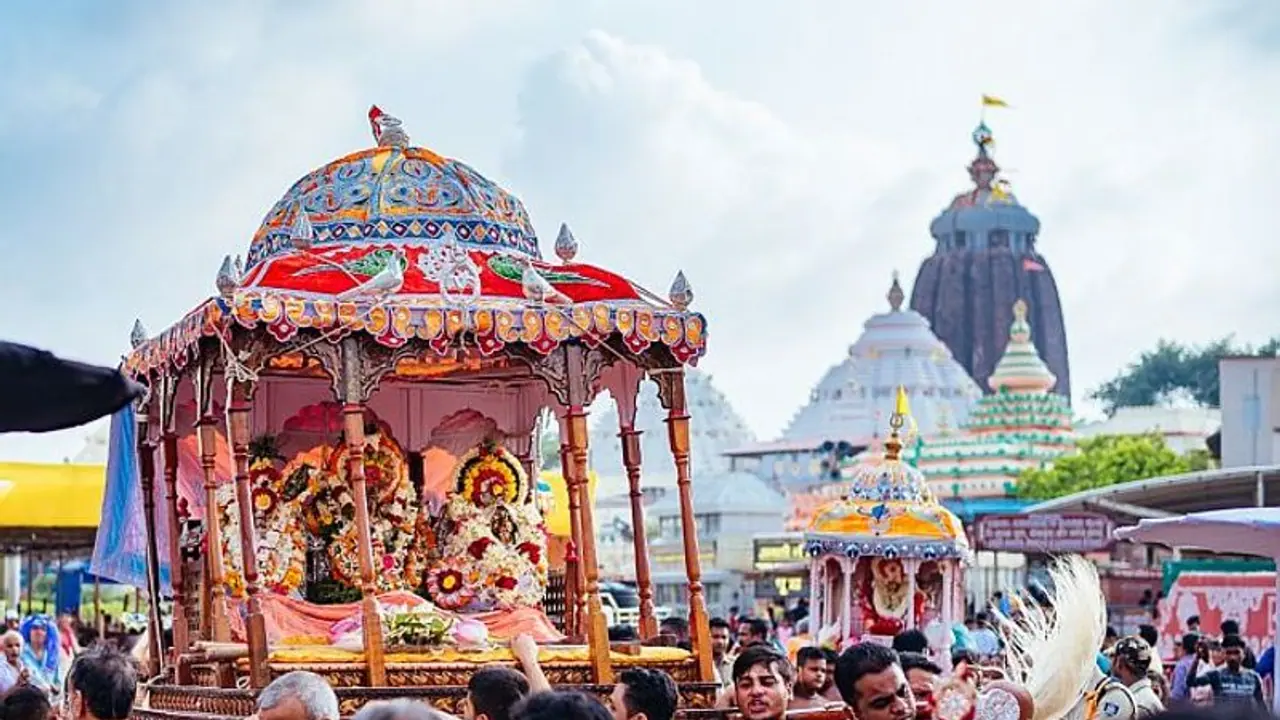The Puri Heritage Corridor Project has been in the eye of a storm after the ASI told the Orissa High Court that no heritage impact assessment studies were conducted before the commencement of the project.
Yet another artefact has been recovered during excavation work for the controversial heritage corridor project in Puri, Odisha. This time, a sculpture of a lion, which according to the Archeological Survey of India could date back to the Ganga dynasty, has been found.

Also Read: Explained: Places of Worship Act, 1991; Know the contentious law
The partly-damaged relic was found in the 75-metre periphery area of the Jagannath temple for the Puri Heritage Corridor Project. It was recovered from the premises of the Emar Mutt near the 12th-century temple. ASI's Bhubaneswar Circle Superintending Archeologist Arun Kumar Mallick and his team of experts recovered the lion sculpture and sent it for tests to the archaeological laboratory.
According to Mallick, the lion sculpture could be of the East Ganga dynasty that ruled Kalinga (the ancient name for Odisha) from the early 5th century to the early 15th century.
The Puri Heritage Corridor Project has been in the eye of a storm after the ASI told the Orissa High Court that no heritage impact assessment studies were conducted before the commencement of the project.
The Controversial Project
The ASI, in its affidavit, filed before the high court, that the project has caused irreparable damage to the heritage site. The May 9 affidavit noted that the ASI had recovered two similar lion sculptures from the site.
The latest recovery has triggered a storm with locals now demanding that ground-penetrating radar surveys be conducted before further undertaking excavation work at the periphery of the shrine.
The controversy made headlines when Puri resident Dilip Baral approached the Orissa high court in March claiming that the excavation work may endanger the temple's structural safety. In its interim directions, the court told the ASI and state government agencies to conduct a joint inspection and file a report.
The ASI, in its scathing affidavit, slammed the state officials for their lack of knowledge about methods of soil removal. The ASI said that the mindless removal of about 15 to 20 feet of stratified deposit had caused irreparable damage to the heritage site.
The ASI further accused the state government of not conducting any heritage impact assessment studies before commencing the project.
The state government, however, put the onus back on the ASI and has claimed that the latter had granted a no-objection certificate in September 2021 to go ahead and construct drains and toilets.
What do the rules say?
The Puri Jagannath temple is a centrally-protected monument under the ASI. As per the Ancient Monuments and Archaeological Sites and Remains (Amendment and Validation) Act, no construction can come up at 100 metres around its perimeter without the nod of the National Monuments Authority.
NMA rules mandate that a heritage impact assessment study is mandatory for carrying out developmental work around any historical monument with a built-up area of over 5,000 square metres. The temple in Odisha is spread over 43,301.36 square metres.
What is the Puri Heritage Corridor Project?
Odisha Chief Minister Naveen Patnaik had in November 2021 laid the foundation stone for the Rs 800 crore Srimandir Parikrama Plan or Puri Heritage Corridor. The project involves transforming a 75-metre perimeter area of the Jagannath Temple into a heritage corridor.
Based on the lines of the Kashi Vishwanath Corridor project, the intention is to make the Jagannath Temple a global destination and attract more devotees.
The project, with a May 2023 deadline, envisages giving devotees an 'aesthetically-delightful' experience with a wide terraced green landscape and pedestrian-only pathways. It will have amenities like a temple reception centre with a queue management facility for 6,000 people, information-cum-donation kiosks, cloakrooms, multi-level car parking, a dedicated shuttle cum emergency lane for accommodating police, drinking water fountains, fire and emergency vehicles and an integrated command and control centre.
Also Read: Army shelves idea for all-women 'Sierra' squadron at National Defence Academy
